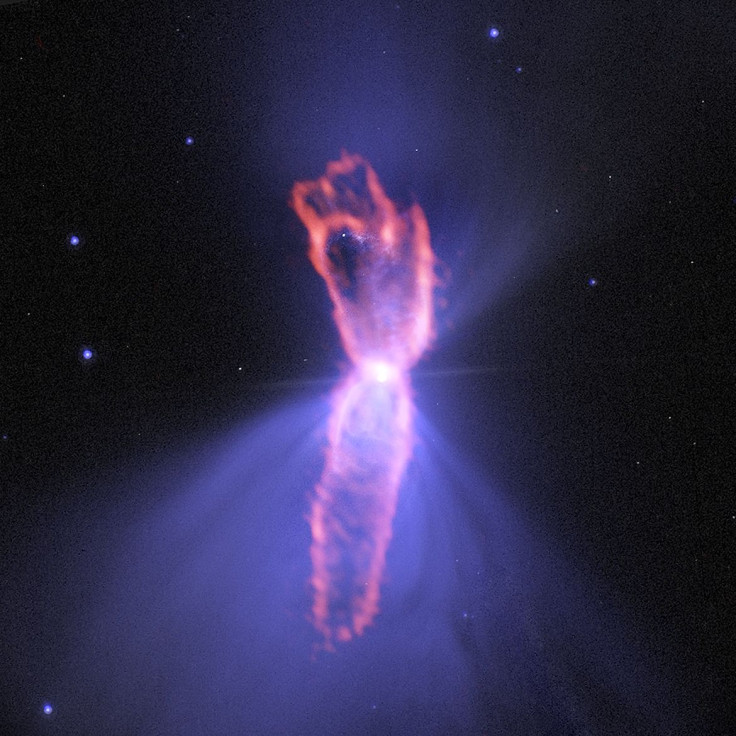Star Collision Created Coldest Object In The Universe — Colder Than Space Itself

The coldest object in the universe got so chilly because another star took a death plunge into its center, researchers say.
Their study in the Astrophysical Journal explained data from the Boomerang Nebula suggests the dying star at the heart of it “interacts directly with a binary companion” — another star that has merged with its core. Although the companion star took a fatal dive into its host, it didn’t go out quietly; when it joined forces with the primary star 3,500 years ago, it threw gas and dust from the star outward to create the “ultra-cold outflow” scientists now see.
Read: Scientists Watched a Star Become a Black Hole, But They Were Expecting a Supernova
How did that collision make the Boomerang Nebula, which is in the constellation Centaurus, the coldest known object in space? The study said the quickly moving outflow expanded so fast, it shed its heat and has now “cooled significantly below the cosmic background temperature.”
The cosmic background temperature is 2.725 degrees warmer than absolute zero, the coldest temperature possible and the rock-bottom at which atoms stop moving. That little bit of heat in the empty spaces throughout outer space comes from radiation that hangs around from the Big Bang that created the universe. The star at the heart of the hourglass-shaped nebula — which is in turn surrounded by the spherical, freezing-cold outflow created by the companion star’s plunge — is an old, dying red giant about 5,000 light years away from Earth. The National Radio Astronomy Observatory said it was first discovered absorbing that background heat, which means it had to be even colder than the depths of space. It has been measured at less than 0.5 of a degree warmer than absolute zero, which roughly translates to -458.5 degrees Fahrenheit.
By gathering data about the nebula’s age, mass and energy, the scientists learned much of the material surrounding the star “has been blasted out into space at speeds far beyond the capabilities of a single, red giant star,” Raghvendra Sahai, a NASA astronomer and lead author, said in the NRAO statement. “The only way to eject so much mass and at such extreme speeds is from the gravitational energy of two interacting stars, which would explain the puzzling properties of the ultra-cold outflow.”
The outflow is moving faster than 93 miles per second — so fast that it has grown to be close to 20 trillion miles across.
Read: These Baby Stars Live Fast and Die Young
The Boomerang Nebula is going to lose its cold crown, however. NRAO said the star at its center will shrink and warm up, and start causing the gas particles around it to become electrically charged. That nebula will become a “planetary nebula,” a bright cloud of gas that, although it represents a dead star that has stopped performing nuclear fusion, could one day condense into new stars, keeping the circle of celestial life going.
© Copyright IBTimes 2024. All rights reserved.





















